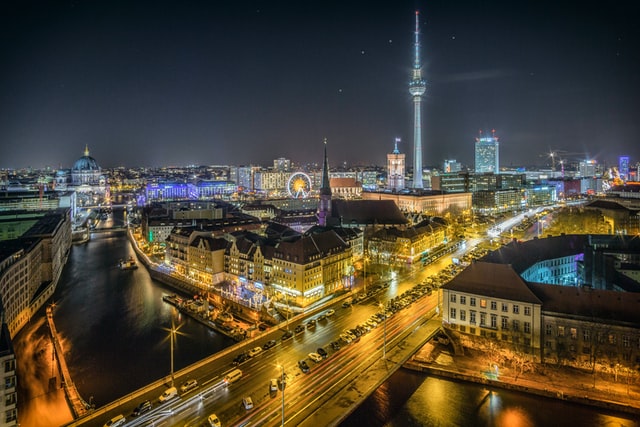Of the many means of public transport in Germany, the main ones are the bus, tram, U-Bahn, regional trains and S-Bahn. ICE/ICs is a high-speed train used for long-distance travel.
Management
All the railway systems are operated by Deutsche Bahn (DB) Railway Company. Whenever you see the abbreviation DB, it infers the central train station.
In different regions, different associations operate local transport such as bus, tram, and U-Bahn. Therefore, the fare also is subject to these different managements and varies between regions.
Zones
Every city has 3 zones, all of which have slightly different fares. The first two zones are mostly tourist attraction location, and airports are usually located in the outermost zone. When buying tickets, be keen on the zones so that you save money and avoid getting fined when you go to an invalid region.
Tickets
You can check the ticket price at the local region’s association website or app. Alternatively, you can type “Name of city/region” + “Verkehrsverbund” on Google then see its site in English. A map of all lines can be downloaded are acquired for free at the DB info counter located at the central train station.
Public transportation
Public transport tickets are bought at the station through a ticket machine, at the DB info counter located at the station, at the DB website or app and through the website or app of the local transportation association. They can also be directly bought from the driver. This is especially the case of buses or tram.
In case you cannot understand the language through which the ticket service is offered, always ask for help or reach the DB info counter.
Local transport
There are three common types of tickets.
Single ticket – it costs 2 to 2.8 Euros per person. It allows you to travel anywhere and by any means, regardless of the number of stops you make in the chosen zone. In the city, you can move by any means within 1.5 hours.
Day ticket – it costs 6 to 8 Euros per person. It allows you to travel by any means and to any place in your zone of choice. It is valid for a day. Pay attention to the validity period as it may either be a 24-hour ticket or be valid only until 3.00 am the following day.
Group ticket – a group consist of a maximum of 5 people to whom an age restriction applies. The ticket costs 12 to 20 Euros per group. In some regions, this price is fixed for groups not exceeding five. In other places, however, the price is set for the first ticket and an extra amount is charged for additional persons.
Long-distance transport
For long-distance travels, the price system works similar to flight booking; the later you book, the more you pay. Hence, buy your tickets well in advance. You can travel long distance via ICE/ICs, by connecting S-Bahn or by connecting regional trains.
There are two types of tickets in the long-distance: Flexpreis and Saving fares.
For Flexpreis, you pay more, but you get more time and location flexibility. You can travel at any time and route between your specified departure point and destination within 1 to 2 days from the validity day of your ticket.
These benefits are not accrued to Saving fares.
Promotion tickets
They are group tickets for long-distance travel. Listed here are the common ones. Db has many promotions, especially during summer. Some of the promotion tickets include regional day ticket, weekend ticket, and day ticket.
You should buy the tickets from the DB app and save yourself the 2 euros you would be charged if you purchased at the DB info counter. Enjoy your travels.



